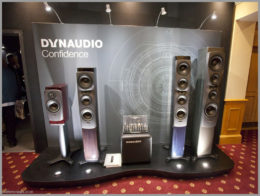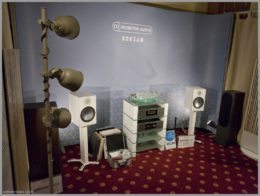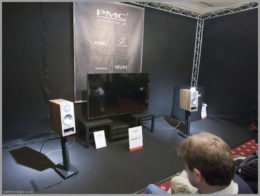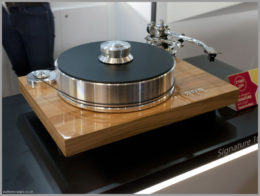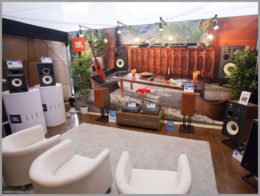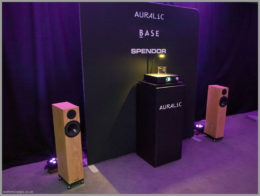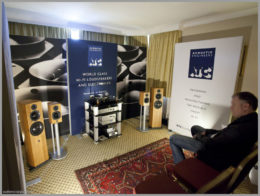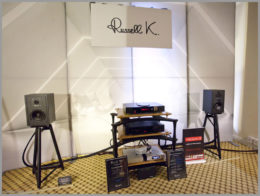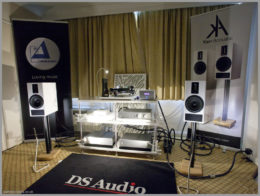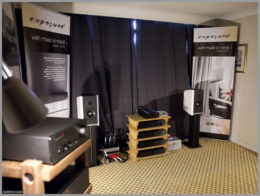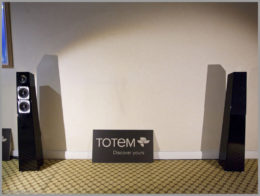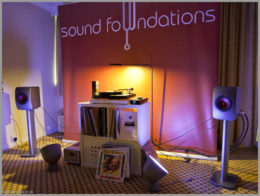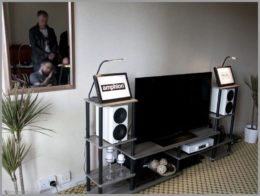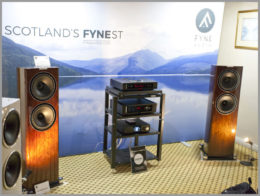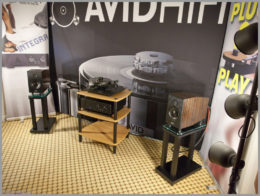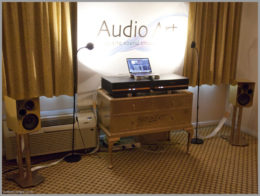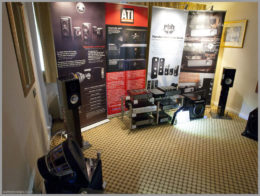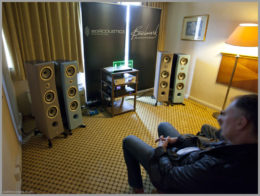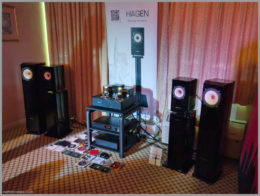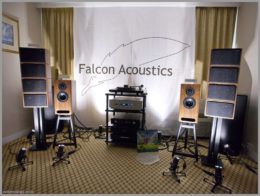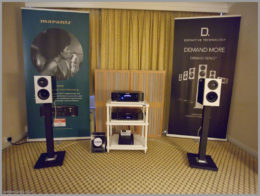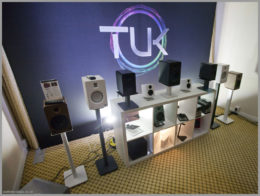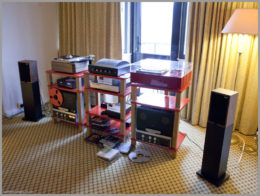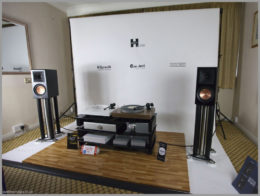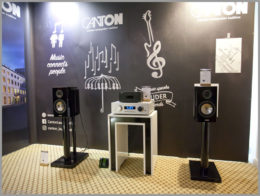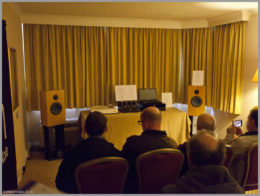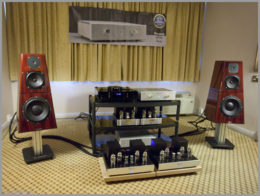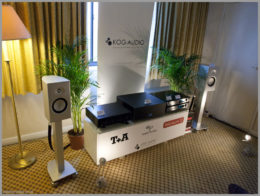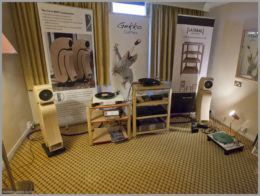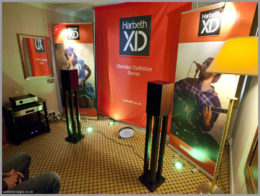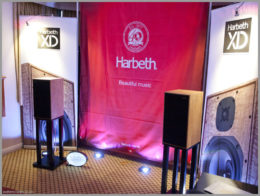Bristol HiFi Show 2020 Review
My good friend and I decided to attend the Bristol HiFi Show 2020. Although we are both music lovers, we do like the gear too, and similarly to other audio enthusiasts, we are always curios of ‘what’s out there’. Bristol is roughly a 4 hour drive for us, so we set off on Friday after work and arrived in Bristol late evening, around 11PM. We stayed in the hotel next to the show, which meant that we got there first thing in the morning and spent a full day there.
The purpose of this Bristol HiFi Show 2020 review is to share with you our first impressions. Yes, just first impressions… after all, a comprehensive evaluation of HiFi gear in a non-optimised hotel room with lots of background noise and sound pollution from adjacent rooms is next to impossible. Moreover, music choice can make a huge difference. We spent less than 10 minutes in each room, which means that our impressions are based purely on the music played at the time. These impressions are going to be based around the speakers, as in my opinion, speakers together with the room have the biggest impact on how a particular system sounds, providing of course all other equipment is of a decent quality.
Photos below show more speakers than what is described in this Bristol HiFi Show 2020 review. The reason is that we simply did not have enough time to make notes about all of the systems we listened to and decided to comment on the ones that captured our attention (for good or bad reasons). Therefore, if you spot a photo of a system that is not described below, it most likely means that we did not find it very interesting; sorry.
Is Playing Very Loud Really Necessary? A Question for Dynaudio and PMC.
The first room we visited was playing Dynaudio Confidence 60 speakers and although the room interior looked great, the sound was terrible. Not only was it too loud (and I do like to listen at louder volumes, so usually if it is too loud for me, it is VERY loud), but also the bass was really boomy and not very well controlled in the listening position. Not impressed considering that these are £30k speakers from a reputable company.
The next speakers were Monitor Audio Bronze 100 and although the volume was at a normal level, the speakers sounded very light on their feet (i.e. not enough bottom end extension for the size of the room) and as a consequence, not very engaging.
Next up were PMC Twenty5 22 speakers and similarly to the Dynaudio demonstration, volume level was way too loud. It sounded like the speakers were shouting, to the point that I wasn’t event capable of enjoying the music. I don’t know how businesses with such a great reputation can allow for this to happen when the main reason for them being there is to show their speakers in the best possible light.
Are ATC SCM50 and Spendor A4 Speakers Really This Good?
After the first 3 demos I was beginning to lose any hope, but this changed when arrived at the Chord Electronics room and listened to ATC SCM50 speakers… Finally, the music was not only played at the appropriate volume for the size of the room and number of people in it, but also sounded very good. The speakers were very balanced across the whole frequency spectrum, quite dynamic with impactful bass and effortless presentation. A breath of fresh air after our first three demonstrations.
We then listened to Proac K10 speakers and left feeling slightly disappointed. The music was led by a drum recording with some instruments on top of it – no vocals. This was played for nearly 10 minutes and despite being played from vinyl, the top end sounded quite brittle. The upper bass was quite dynamic but after a while, the whole thing became fatiguing.
Next up were Spendor A4 speakers and this is where we got a pleasant surprise. One of the larger rooms at the show was powered by a couple of relatively small floor standing speakers. And it sounded great. It had plenty of low end bass, to the point that I actually had to ask one of the Spendor representatives if there were using a sub-woofer – the answer was no. It was all the Spendor A4. They sounded very dynamic, well controlled and really engaging. Moreover, despite being played quite loud, they sounded very open and uncompressed. We were very impressed.
From that, we moved to ATC’s demonstration room. We started with ATC SCM7 speakers and for the size of the speaker they sounded pretty composed, however, listening to them after listening to large speakers, one could immediately notice the presentation being a little forced and not as effortless as on larger speakers. This was further reinforced when we switched to ATC SCM40A active speakers which sounded a lot more effortless and free. Very composed with clean and balanced sound.
More Top End Does Not Equal More Resolution
Next up were Russel K Black 50 speakers. Initially they sound quite impressive when a well recorded drum section was being played, however, as soon as different things entered the song, they sounded quite top-endy and shouty, to the point that we just left the room as we could not stand it.
We were then pleasantly surprised by the Elipson Legacy 3230 speakers. They sounded very composed and polite, which was a pleasant change after listening to most speakers up to that point. They were nice to listen to and I could not criticise anything about their sound.
Next were Kerr Acoustic, Kudos Titan 505 and Proac Response DT8, and neither of these impressed us. Not very engaging and quite hard and shouty in case of Kudos and ProAc speakers.
We then listened to Totem Tribe Tower speakers and they sounded quite good. It wasn’t the effortless presentation of bigger speakers, but they sounded quite balanced and an easy listen. Maybe not for critical listening but I definitely would not mind listening to a lot of background music on these speakers.
From there we moved into Kef’s listening room and we listened to an active set of Kef LS50. They sounded quite neutral and we were not really able to point to anything that we did not like, but at the same time we’ve not fallen in love with them either.
The last set of speakers before a well-deserved lunch (and ear) break were Lockwood Mini and Lockwood Harrow. I was quite excited to see them as I had good experience with vintage Lockwood cabinets featuring Tannoy drivers. Unfortunately, they were playing Bowie, and although I loved the songs, I did not love the recording quality. It all sounded a bit ‘rough and ready’ and quite edgy. I’m suspecting that this was more to do with music choice rather than the speakers.
Magnepan LRS Speakers – What a Pleasant Surprise
After grabbing some lunch we were off to the Wilson Benesch Square Five demonstration. This was one of the biggest rooms at the show so I had high hopes. Unfortunately my impression was that the speakers did not load the room properly, they sounded too small for the room. Quite even sounding but nothing to write home about.
We then moved onto two separate rooms from Scottish Fyne Audio. One with Fyne Audio F703 floor standing speakers and one with Fyne Audio F701 bookshelf speakers. We had never heard speakers from this brand before, very even handed comes to mind.
Next up were Acoustic Energy 500 Series speakers. The speakers were placed close to the wall behind them and the listening bean-bags (seats) were against the opposite wall. This resulted in way too much bottom end in relation to all other frequencies. I don’t know how much of this excessive bass was due to the speakers and how much was due to the placement – all I know is I could not listen for more than a couple of minutes.
We then were treated with a really pleasant listening experience, Magnepan LRS speakers. Easy to listen and natural sounding. They lacked bass impact but they had more bottom end than I was expecting to hear. If you are used to conventional loudspeakers, listening to Magnepans may be a little strange to start with as you seem to only hear the bass with your ears but you don’t feel it with your body. Despite this, we really liked the presentation.
If You Want To Rock and Roll Klipsch Hersey III May Be The Answer
With smile on our faces we left that room and listen to two sets of Focal Kanta N2 speakers. Not good… Focals sounded quite light, thin and not engaging at all. I think at the time demonstrators were trying to sell IsoAcoustic speaker isolators and they were running an A/B test. I found that utterly pointless. Not only speakers were set at different angles, but the ones on the isolators were a few centimetres higher… and if this wasn’t enough you are asking people to hear differences that are by their nature borderline of perception but also with booming sound coming from other rooms around. Really?
Next up was a demo room with Voxativ Hagen fullrage speakers with the addition of active subwoofers. Initially they sounded fantastic when playing a dynamic drums recording – the speed and impact of a well-controlled dry bass was amazing. However, as soon as they started playing vocals we left the room. It sounded tizzy, not very open and as a consequence, not very nice to listen.
We then listend to an array of Falcon Acoustics LS3/5A. Quite a pleasant experience which reminded me of my Chartwell LS3/5A. Nothing stood out but one could probably sit there for a long time without experiencing any fatigue.
From there, we moved to Definitive Technology Demand Series speakers. They started their demo with an instrumental track with the sound of Ping-Pong ball bouncing (?) and this actually sounded quite good. As soon as they started playing something with vocals we left the room. I’d definitely demand more from my speakers…
At that point my excitement was building as we were heading to Klipsch’s demo room. I’ve never heard any of their speakers from the Heritage Series and Klipsch Hersey III were on my ‘to try’ list for a while. On the first listen – an impressive sound with plenty of spark and great dynamics. Reminded me of my JBL L100 Century. I suspect that one could get tired of it during a long listening session though. Nonetheless, you cannot accuse these Klipsch Hersey III of lacking character! The Klipsch RP 600 sounded a lot more balanced, but left us with an impression of ever so slightly lifted top end – not bad sounding speakers though.
Chinese Speakers With British Heritage? Yup, Here Are the Wharfedale Linton Heritage
Canton Vento 836.2 sounded quite polite and easy to listen but they did not leave any memorable impressions. Audio Note Type J speakers on the other hand impressed us with their very natural, smooth mids and treble. Voice and instrument tone were really good too. If we were to criticise the Audio Note J for anything, it would be the excessive amount of bass (at least from where we were sitting). There was simply too much of it in proportion to all other frequencies. The fact that speakers were tucked in corners and fronted by tubes probably did not help the situation.
Onwards and upwards we moved onto the exotic looking Von Gaylord Audio Legend Reference speakers. Really impressed by their finish but not by their sound. They sounded too bright and not very forgiving; it seemed that there was not enough midrange in comparison to other frequencies.
Next up were one of the most interesting speakers at the show – the Curvi BMR loudspeakers. Full range BMR driver placed in a funky looking transmission line cabinet made of birch plywood. They actually sounded quite balanced and easy to listen, perhaps a little limited at the bottom end, but still very enjoyable. Definitely worth a listen.
We then moved onto Wharfedale demo room and listen to Wharfedale Linton Heritage speakers. I’ve always liked vintage Wharfedale speakers from the 1960s and I have always appreciated the contribution to loudspeaker design that their founder, Mr Gilbert Briggs, made. I’ve not really payed much attention to their new products, especially since the brand was bought by the International Audio Group. My mistake… I was quite impressed by the sound of Wharfedale Linton Heritage speakers. They sounded smooth, not compressed and well balanced – a speaker set you could live with.
We left the best for last… or at least this was what we thought before entering the Harbeth demonstration rooms. Mr Shaw (Harbeth owner and the man solely responsible for their design) and his team were presenting two speakers from their new XD (Xtended Definition) series – Harbeth P3ESR XD and Harbeth C7ES3 XD. Hopes were high but the impressions not so much. The P3ESR XD presented us with a familiar Harbeth sound but did not blow us away. They lacked extension at the bottom end and sounded a little limited dynamically, which to be fair is to be expected from speakers of this size playing at relatively high volume. The C7ES3 XD sounded much better due to greater low end extension, more full-bodied sound and more effortless presentation. Unfortunately, the gentleman running the C7ES3 demo played them too loud for me which resulted in somewhat mixed impressions. Overall, we left the Harbeth demos slightly underwhelmed. On the other hand, I could never appreciate Harbeth speakers during relatively short listening sessions (have a look at my review of Harbeth M30.1 to understand why), and this may well have been the case during this demonstration.
Bristol HiFi Show 2020 Summary
I was expecting to come back home from the Bristol HiFi Show 2020 and be disappointed with my HiFi setup. The result was completely opposite. I came back home, had a listen, and though: “this actually sounds much better than 99% of the systems that I heard during the show!”. And to my ears it really does. The Bristol HiFi Show 2020 show made me appreciate what I have and it also made me realise that despite technological progress, changes do not necessarily equal improvements. Sometimes things just sound different – not alwasy better. Moreover, I found it rather disappointing that some of the demonstrators paid more attention to connecting equipment with exotic cables rather than to speaker placement, room treatment and appropriate volume for the room size. Out of all the systems that we listened to during the Bristol HiFi Show 2020, here is the handful that left us curious:
- ATC SCM50 for their well-controlled and effortless sound,
- Spendor A4 for their vivid, dynamic and open presentation,
- Magnepan LRS for their natural easy to listen sound,
- Audio Note Type J for their tone and smoothness,
- Wharfedale Linton Heritage for their easy-to-live-with balanced sound.
Reviewed: February 2020 | Published: March 2020



